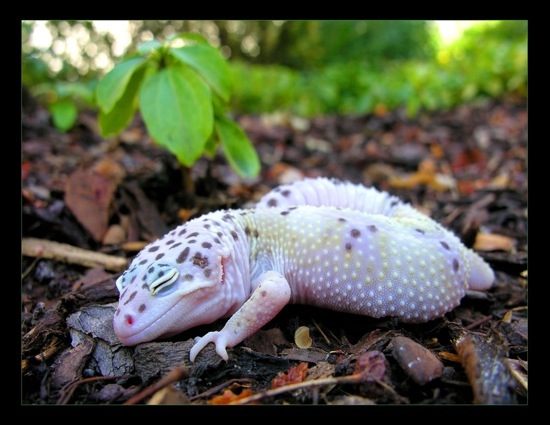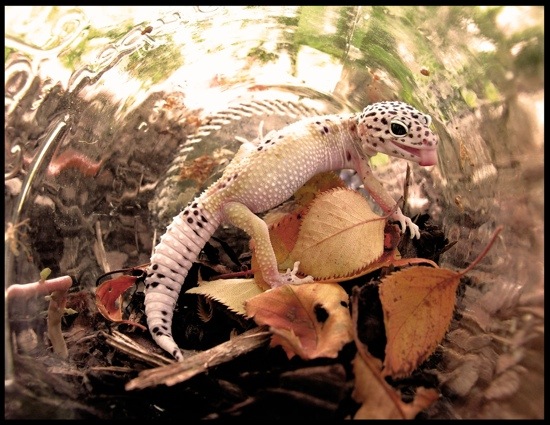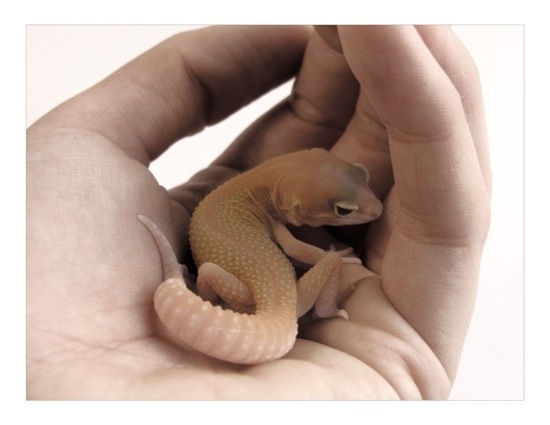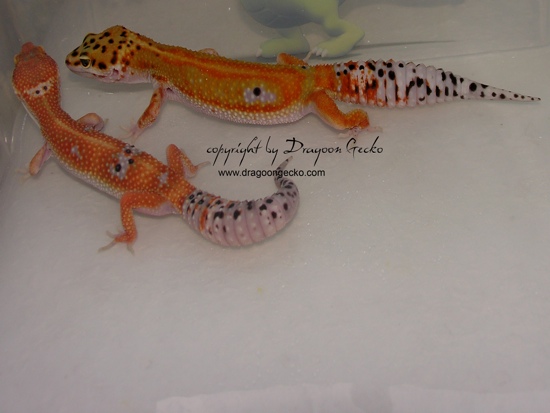[ad#superworm]
Nowadays a huge number of reptile pet keepers eventually make the decision to produce offspring from their pets. Breeding your beloved reptiles and experiencing the miracle of new life can be one of the most beautiful hobbies in the world – no question about that.
However, there is so much more to be considered when it comes to breeding than just putting males and females together and watching your pretty babies hatch. This article deals with the most common issues that can arise when you start breeding reptiles.
You only get out what you are willing to put in
It all begins with the willingness to inform yourself carefully and in detail about the necessary basics of keeping, raising and breeding your species in advance before even thinking of reproducing animals. This also includes a proper knowledge of genetics in general and of all color morphs (if there are any in your species) possibly involved in your future breeding program. Why?
- Learning about housing and incubation methods will help you choose the safest system and prevent losing adults, eggs and hatchlings.
- Knowing about genetics helps reduce the risk of inbreeding, gene loss and the reproduction of undesired traits, such as general weakness or infertility. Be aware that some undesirable traits can be produced by breeding two unrelated animals as well as related ones; your knowledge in this sector can be essential to recognize and exclude those traits from your breeding program if you plan to breed wild type reptiles or color morphs.
- Proper genetic knowledge also helps a lot in color morph breeding to produce offspring of a quality you might be able to sell in the already fairly overloaded reptile market. Be aware that with “color morph species” such as leopard geckos or corn snakes, most customers are not eager to buy animals with unknown or “wildly mixed-up” genes. Do your homework in advance to find out which crosses are accepted in your community and which ones are not.
- Knowing the variability of each colour morph, including “High End“ vs. “Low End“, will give you a fair impression of how to price each reptile you sell and what to really expect from your future breeders and their offspring in the end. This will not only help you reduce disappointments, it will also be the key to constantly improving the quality of your offspring over the years to come.
Clear goals and patience mark the way to success
As we have seen, the willingness to invest on both the mental and physical level is a very important factor. But it does not stop there. The importance of having a clear vision when it comes to breeding cannot be stressed enough. Breeding without a goal almost automatically leads to a dead end and will hasten problems. Know that even if your goal is to “simply” have healthy offspring that eat and grow properly, it also requires proper management and basic knowledge from your side to achieve this goal if you do not want to gamble – which certainly would not pave the way for your success and the trust of your future customers.
Therefore, the first and most important step should be as follows: Do not make the mistake of thinking that every one of the reptiles you already have will be suitable for breeding,
Do not make another fatal mistake by buying something without carefully thinking beforehand what you really want to achieve in the end.
First, have a look around to get an impression of what is already there. Then form an idea and choose the animals most fitting for your goals. Buying from an already experienced breeder with a solid reputation can be very useful at this point as such a breeder is able to assist you and give you additional tips based on his or her personal experience.
The process of choosing the right animals can definitely take some time, as it does not only involve the appropriate choice of species, sex and general quality, but will also include further minor but important factors such as the age of the animals you wish to buy.
Juvenile and baby reptiles might be cute and colorful, and they are often cheaper than adult animals. But they might change their colour or will for other reasons not fit into your breeding program later on. Therefore, it is wise not to expect every single one of them to be a perfect future breeder. If you know 100% what you expect from your future breeding reptiles and do not want to take a risk, buy some high quality animals from respectable breeders and maybe even invest in some “proven breeders“ where you can be sure that they have already reproduced in a given manner. On the other hand, raising juveniles and watching them grow can be one of the most beautiful things to experience. Whichever you choose, be aware that a reptile is a living being, not a machine, and therefore not every juvenile or virgin adult you buy will turn out to be a stunning adult or an excellent breeder. So make sure that your decision will be the right choice for you in the long term.
Last but not least, do not start with more than one breeding group in order not to overdo it in the first few years.
Quality, quality, quality!
One of the most important and often forgotten rules in reptile breeding: Quality will always have its price.
That does not necessarily mean that you have to buy only the most expensive specimens of a color morph or species in order to get nice offspring. But it is a fundamental truth that animals of low quality are usually unlikely to give you high-end offspring.
This is especially true with color morphs: even in co-dominant traits (such as “Mack Snow” in leopard geckos), additional polygenetic traits determine how bright and clear the color of the offspring will be and how brilliantly they express their traits.
It is also very important to keep in mind that color is not the only factor determining quality. High quality animals that grow quickly, eat properly, show good general constitution, have no visible major or minor deformities (such as slight overbite for example), reproduce trouble-free and produce a satisfying number of healthy and strong offspring are highly coveted and therefore more expensive.
Theory versus reality
Breeding care sheets and short descriptions found on the Internet always show how it should work out if there are no problems or difficulties at all involved. But as we all know, life sometimes does not go the way we want it to, and especially in the beginning, not everything goes smoothly. So prepare in advance for the challenges that might lie ahead of you.
Some of the more common problems are:
Improper nourishment of your breeding animals
This may show up in loss of weight, infertility, decline in egg production, large number of infertile eggs, hemipenis prolapse in males, egg binding in females, higher amount of deformed or premature babies, and many more.
Incorrect incubation temperatures and high quality incubation machines
Self-made incubators may be cheaper but also can result ina significantly higher risk of temperature fluctuations for the untrained newcomer, which could result in the wrong sex, various deformities or even death of the unborn. As an inexperienced beginner, investing in a professional reptile incubator is often much cheaper and more satisfying than losing all your eggs because you accidentally boiled them.
Improper care & nourishment of your hatchlings & juvenile
This can result in MBD (metabolic bone disease), infections, parasites, etc. Some of the more common signs are a slow growth rate, extremely washed out or dark colours, skin- & shedding problems, hunger strike or even starving of your precious offspring.
Of course the list above is far from being complete. As a consequence, informing yourself from literature beforehand is key to recognizing the individual needs of each of your animals before something happens that you might deeply regret later. It is also the quickest and most successful way for honing your instinct for your reptiles, which will help you a lot in keeping watch over your colony.
Know your limits
A first time breeder can hardly take care of a large number of hatchlings and breeders.
Most people underestimate the time and money needed to keep every single animal in a proper to excellent condition. Especially premature or generally weak babies can easily take twice the time or more, for instance when force feeding is necessary.
Unfortunately, the past has shown that many first time breeders with high numbers of hatchlings can quickly get overloaded with work. Reptile babies are much more sensitive to their environment – and therefore need very careful attention. As the little ones hatch with almost no fat reserves, not providing enough food or feeding them the wrong way will result in quickly weakening them or could even cause serious disorders or illnesses. The best prevention for such cases is a proper and detailed introduction to the needs of hatchlings and juveniles of your species combined with close monitoring on a daily basis.
Be aware that every additional baby will take away part of your attention from the ones you already have. Therefore, it is wise to start slowly with a small number of hatchlings, watch and monitor them carefully and get used to their daily care. Approximately 5-10 babies in the first year is a good umber to start with. You will quickly realize how much time and effort it can take to watch, feed and clean the extra cages in addition to the adults you already have and that in some species it is sometimes better to raise them alone in order to prevent losses.
Prepare for extra costs
There is a significantly higher risk for veterinary bills in the first years, which must be expected, as many different problems can occur in breeding- and if they do, fast and professional help is often essential for the life of the animal(s) involved.
Generally weak hatchlings, youngsters that do not eat properly all of a sudden, sand impaction, hemipenis prolapse in the breeding male and egg-binding in the breeding female are just some of the most common problems. All of them are serious health problems, putting the life of the individual in great danger if help does not come in time.
But how to determine whether your animal(s) suffer from something serious or not? This is exactly the reason why more veterinary visits will take place in the first years of breeding. Your eye is still untrained, and help from the Internet is often not as useful as expected and in some cases only takes up precious time.
As reptiles tend to generally weaken and die much more quickly than many warm-blooded pets such as dogs or cats, serious breeders will take their animals to the vet for a check-up as soon as they have the feeling something is wrong. They will not take any risk of losing one of their animals that was bought as a lifetime companion, or even brought into life.
Attract potential customers
Selling reptiles is not as easy as it looks:
As other articles on this site have already stressed, in times of an over-flooded reptile market you cannot expect customers popping up at your door before you have earned yourself a reliable reputation – which can easily take years of hard work.
With many talented and well-established breeders around already, you need to set your prices carefully. You are probably already aware of the fact that you cannot ask the same price as established popular breeders. On the other hand, selling your offspring way under the average price range will only backfire on your future reputation.
It may sound hard, but by selling cheaply you will in many cases attract fewer people who have done their “homework” and are willing to give proper care – and more people who are only focused on price and do not care at all about quality, work and expenses coming from your side. This has already caused many frustrated breeders to give up after just a few seasons.
It never ends!
There is always something new to learn about reptile breeding. Forums, online articles, magazines and the library provide endless opportunities to broaden your horizon about any aspect of breeding such as genetics, nutrition, health, technical equipment, general knowledge about reptiles, etc.
From the point of your decision to put your animals together for breeding, you are responsible for what you produce. Responsible breeders with a good reputation are always very well aware of this. If you are able to stay up-to-date and willing to reflect about what went well or what could be done better next season you may look forward to a very bright future!






Hi:
I enjoyed your article on what to expect as a first-time breeder. It certainly outlines well the responsibility that should not be taken lightly before heading into the realm of breeding reptiles.
Wonderful article! As someone who is looking to breeding, insight from established breeders is invaluable.